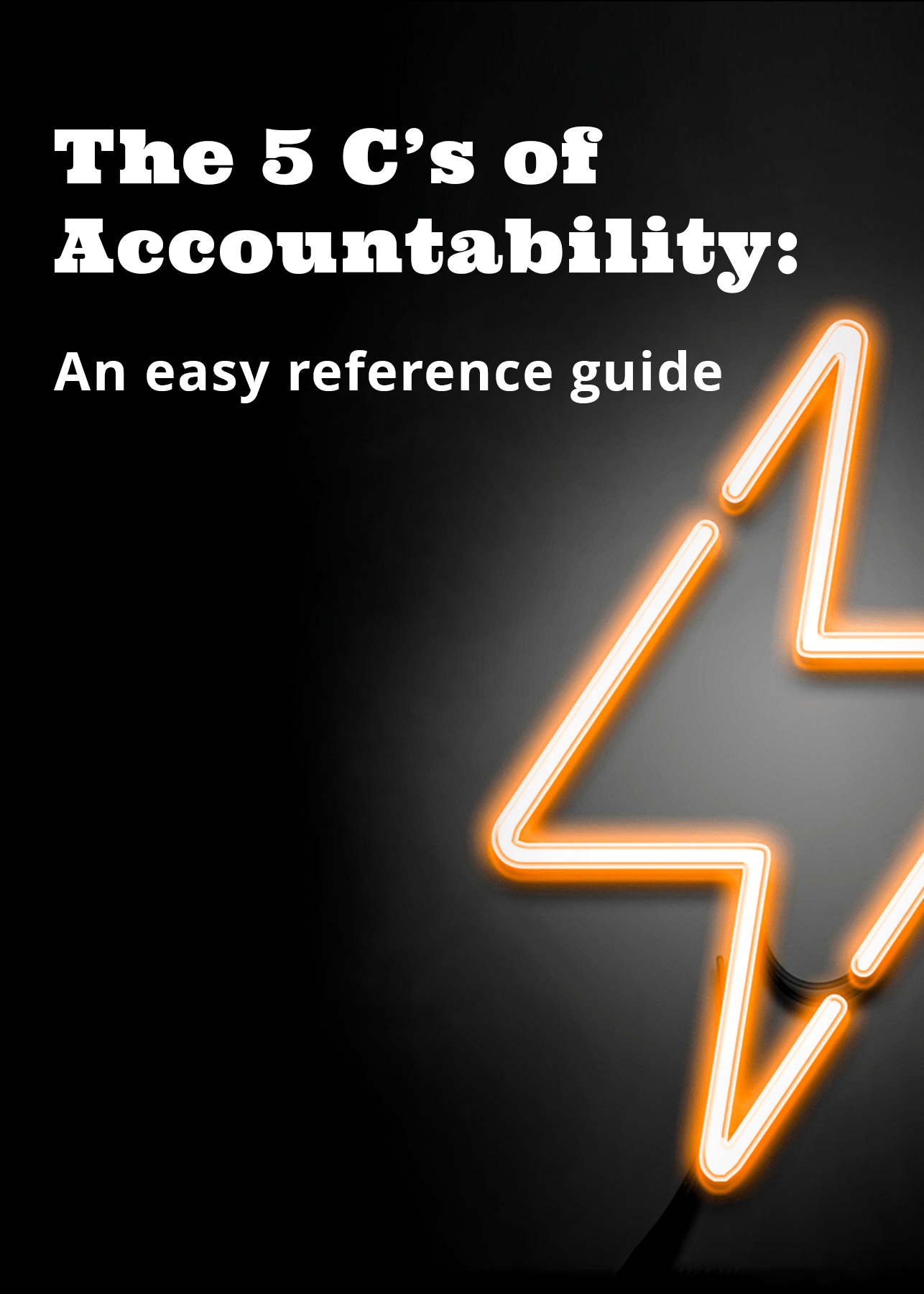Accountability isn’t something you’re born with.
(Recap from our webinar, Accountability: What is it Good For? Already attended: Skip to the takeaways.)
It’s ok if you rolled your eyes when you saw the word “accountable.” You clicked through anyway, right? That’s because you know that even while it’s an overused word, like so many others (looking at you: boundaries and gaslighting), accountability is essential to our relationships, connections, workplaces, careers and society at large.
Even in a poll during our recent accountability webinar, we saw a split between people who felt positive energy from the idea of accountability -and- people who have negative associations with it.
Recap: “Accountability: What is it good for?”
Short answer: everything. For this session, ClearEdge Rising’s Ashley Andersen and Jennifer Higgins dug into how accountability can transform YOU into the leader that teams, colleagues and companies can trust. How? It starts with how you practice. See more takeaways after the jump.
We learned during this session that you’re 65% more likely to achieve a stated goal if you commit to work toward it with someone, and you’re 95% more likely to meet your goal if you keep appointments with that person to check in on progress.
Now, apply that in-it-together mindset to your entire team. That’s when accountability becomes a cornerstone of leadership development.
By communicating clear responsibilities, systems of support (i.e., when and whom to ask for help) and milestones along the way, you’re building a roadmap on transparency and trust. And it guides the team to push in the same direction, together, from here to goal state, no matter what twists and turns happen in between.
Watch the webinar for more background on these takeaways.
What is accountability, anyway?
{2:18} Let’s get on the same page: accountability means you’re taking responsibility for your role – whether it’s at work, in your family, community or neighborhood – and the outcomes of what you do.
Nix the blame game. Accountability means you take full ownership of what (and whom) you’re responsible for.
When you’re a leader at work, accountability means accepting responsibility (for better or worse) for your own performance and the results or outcomes of your team.
Instead of placing blame.
Structures of accountability
{22:35} One way to support your practice is to have structures built into your day-to-day. Accountability structures are things you do or steps you can regularly take to action your role as accountable leader.
There are formal accountability structures (e.g., 1:1 meetings and performance reviews) and informal ones (e.g., slacking a colleague feedback or a quick call to share stories).
The right mix can help you foster a culture of transparency and open communication, which naturally supports accountability across the board.
Five qualities to make you (and your team) more accountable.
{27:06} It’s important to underline: accountability isn’t something you’re born with.
It’s a skill, a practice that you can learn and get great at. And we’ve broken down five qualities a leader should embody to grow the skill and practice on their team.
We say “embody” because effective accountability boils down to five ways of being. That’s right: it’s not simply steps you take or a thing that you’re doing. Accountability digs down to the core of whom you’re being. (Hence the practice part.)
Those five leadership qualities are:
| Conscious Being present, planful and thoughtful about the conversation you’re going to have and impact you want to create. |
Clarity Cut the fluff and filler from your conversations. Say what needs to be said and resist the urge to pad it just for comfort. |
| Caring See each person for exactly whom they are and hold generous assumptions about them. |
Curious But don’t stop there. Invite people into the process and learn about them. |
| Consistent Follow up and make it a habit. |
The power of doing 2% more
{33:44} Think about those five leadership qualities and the formal and informal accountability structures, above. You’re not going to embody or implement everything overnight.
But what if you dialed it up just 2% this week on one of these essentials of accountable leadership?
Consider which quality or action step (structure) gets the most mileage or positive results with your team. Then dial it up 2%. For instance:
- Are 5-minute slack follow-ups sealing up meetings with a high-five (and a focused to-do list)? Apply that approach to 2% more of your meetings.
- Does having talking points help you cut the fluff from conversations and stay on target? Practice staying on script, even when things get uncomfortable.
- Do retrospectives give your team the ready feedback it needs to do the next phase of work better? Prioritize your overall workload and create space for 2% more.
By dialing up some element of your accountable leadership practice, you’ll incrementally elevate each quality and action step over time. Plus: it’s easier for your team to keep up with and adopt new practices that you’re planful and clear about implementing.
What one quality or action step will you be dialing up this week?
The 5 C’s of Accountability: Download the guide
Effectiveness of accountability hinges on how you practice it, especially when you’re a leader. But where do you even start refining your practice?
Tap into this easy reference guide to the five qualities and how to apply them to your role as an accountable leader.
